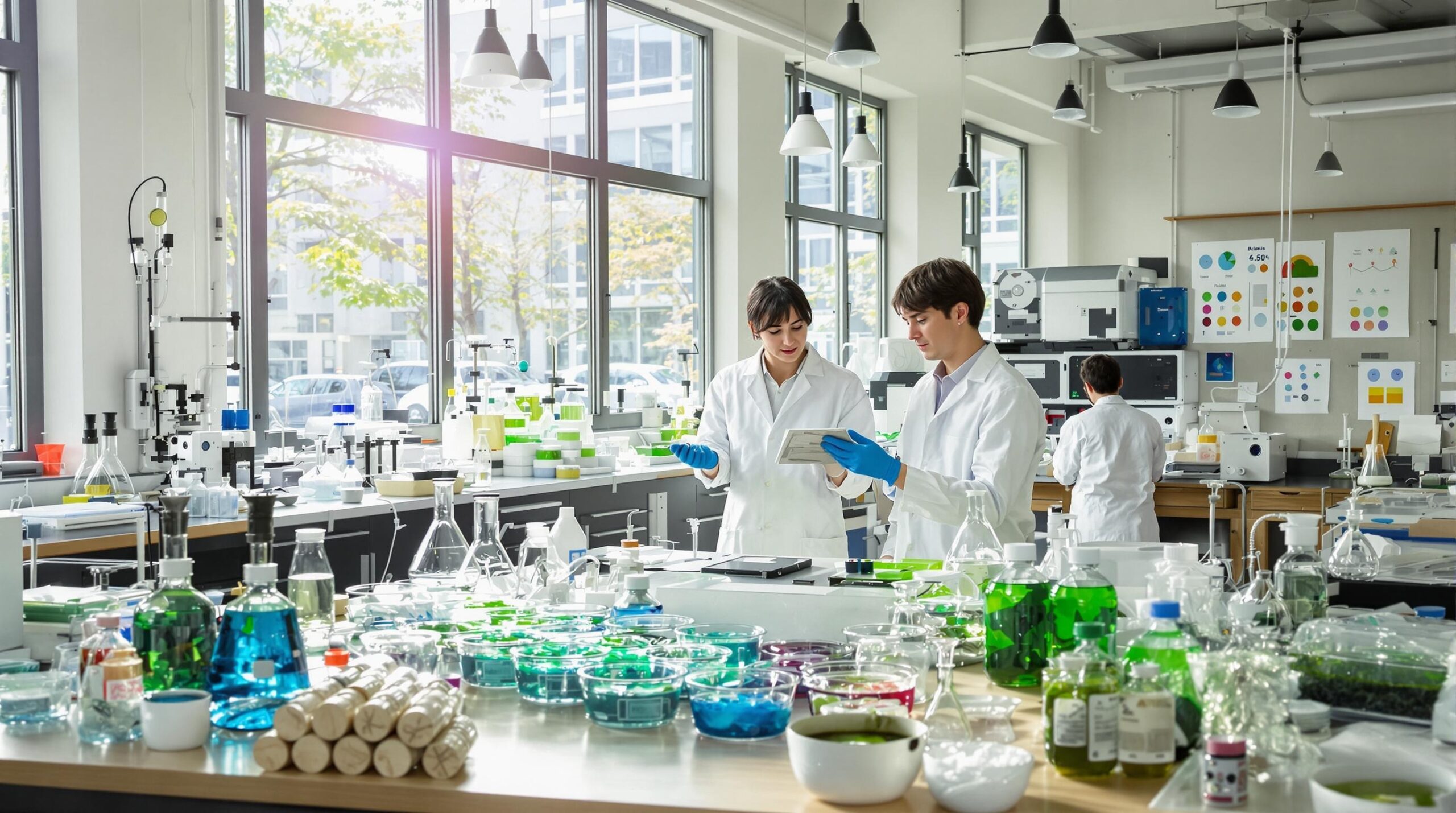Plastic pollution is one of the most pressing environmental issues worldwide. Over 400 million tons of plastic are produced each year, with much of it ending up in landfills or oceans. As plastic waste accumulates, its negative impact on ecosystems and human health grows. Innovations are urgently needed to address the plastic waste crisis. Among these innovations, algae-based solutions stand out as a promising and sustainable approach to mitigating this global problem.
The Scope of the Plastic Waste Crisis
Plastic products are used everywhere, from packaging to everyday household goods. Most plastics are non-biodegradable and persist in the environment for hundreds of years. Plastic waste not only pollutes land but also accumulates in rivers, lakes, and oceans. Marine animals often mistake plastic debris for food, leading to serious health consequences and even death. Microplastics travel through water systems and enter the food chain, ultimately impacting human health as well.
Efforts such as recycling and bans on certain plastics have provided some relief but remain insufficient. The scale of the problem requires innovative solutions that address plastic pollution at its source. Algae-based alternatives offer a groundbreaking avenue to replace traditional plastic materials with biodegradable options.
Why Algae? Understanding the Advantages
Algae are simple photosynthetic organisms found in various aquatic environments. They are renewable, require minimal resources, and grow rapidly. Unlike petroleum-based plastics, algae-based materials are biodegradable and have a smaller ecological footprint. Growing algae helps remove carbon dioxide from the atmosphere, supporting climate change mitigation efforts.
Algae do not compete with food crops for land or fresh water. They can be cultivated using wastewater, saltwater, or even polluted water. This flexibility makes them an attractive, scalable resource for producing sustainable materials. Their ability to absorb carbon also enhances their value as a green alternative.
Pioneering Algae-Based Bioplastics
Researchers and startups are developing different types of plastic-like materials using algae. These bioplastics can replace conventional plastics in packaging, single-use cutlery, and other disposable products. Companies like Algix and Evoware have pioneered the use of algae for creating films and containers that naturally decompose after use.
Algix, for example, produces a flexible material known as Algix Bloom. This compound combines algae biomass with polymers to produce foams for footwear and sports products. When disposed of, these products biodegrade more quickly than their petroleum-based counterparts. Such developments reveal the vast potential of algae-derived materials to disrupt traditional plastic supply chains.
Expanding the Applications of Algae Solutions
Beyond packaging, algae-based plastics are being applied in agriculture, construction, and even 3D printing. For example, 3D-printed objects made from algae-based filaments can reduce fossil fuel reliance in manufacturing. Algae blends also serve as eco-friendly soil films in agriculture, breaking down into harmless organic matter.
The versatility of algae solutions encourages further research and development in various sectors. If industries scale these innovations effectively, they could transform the entire lifecycle of products from production to disposal. As companies adopt those materials, they signal a shift toward a circular economy, reducing long-term waste generation and environmental harm.
Environmental Impact and Sustainability
Algae-based plastics offer substantial environmental benefits over conventional alternatives. First, they degrade naturally, reducing the accumulation of microplastics in nature. Second, algae cultivation absorbs carbon dioxide and even filters water during growth. This process can directly combat both carbon emissions and water pollution.
Several life-cycle assessments have evaluated algae-based plastics. These studies consistently report lower greenhouse gas emissions and a reduced ecological impact. When algae-based packaging breaks down, it does not leach harmful chemicals, further protecting human and animal health. These advantages continue to drive interest in scaling algae innovations globally.
Challenges to Overcome
Despite tremendous progress, several obstacles remain before algae-based plastics can fully replace conventional options. High production costs limit widespread adoption, especially when compared with cheap mass-market plastics. Research is ongoing to improve the efficiency and scalability of algae-based materials and lower their overall price.
Legislative and market incentives will play a crucial role in bridging the economic gap. If governments introduce plastics taxes or support sustainable alternatives, algae-based solutions will become more competitive. Consumer demand for eco-friendly products continues to rise, pushing manufacturers to seek sustainable raw materials, including algae.
Technological Innovations Driving Change
Advances in biotechnology have accelerated the development of high-performance algae materials. Genetic engineering enables researchers to boost algae growth and tailor their properties for specific industrial needs. These innovations lower costs and improve the mechanical strength and biodegradability of algae-based plastics.
Collaboration among startups, academic institutions, and established companies strengthens the knowledge base. These partnerships help move solutions from the lab to commercial markets. Continued investment in research and development remains crucial for the future of algae-based plastics as a leading answer to the plastic waste crisis.
The Future of Algae in Addressing Plastic Waste
Algae-based materials are rapidly gaining traction as a vital component of a greener, less toxic future. As technology matures, production costs will fall, making these sustainable products more accessible and common. Market demand, regulatory support, and technological breakthroughs will drive algae plastics closer to mainstream adoption globally.
Public awareness campaigns and educational initiatives will further boost acceptance and understanding of algae alternatives. Schools, offices, and governments could become early adopters by integrating algae-based products into daily use. As more businesses embrace these solutions, a significant reduction in plastic waste could be realized within decades.
Conclusion
Innovative algae solutions represent a promising frontier in the global fight against plastic waste. Their renewable nature, versatility, and biodegradability offer significant environmental and economic advantages. As research advances and infrastructure expands, algae-based materials may soon rival traditional plastics in both price and performance.
Addressing plastic pollution requires comprehensive, bold action across industries and governments. Algae solutions provide hope for a cleaner, healthier planet. By embracing these innovations, humanity can take significant steps toward solving one of the most urgent environmental challenges of the modern age.

